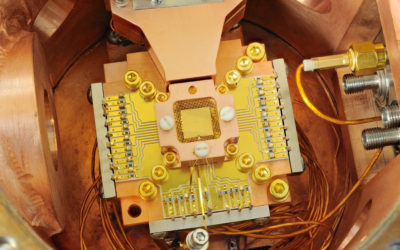“God mode”, for those who aren’t gamers, is a mode of operation (or cheat) built into some types of games based around shooting things. In God mode you are invulnerable to damage and you never run out of ammunition.
Joint Light Tactical Vehicle (JLTV)
Joint Light Tactical Vehicle (JLTV)
Joint Light Tactical Vehicle (JLTV)
The Joint Light Tactical Vehicle (JLTV) Family of Vehicles (FoV) is an Army-led, joint-service program designed to replace a portion of each service’s light tactical wheeled vehicle fleets. The JLTV FoV consists of two variants: the four-seat Combat Tactical Vehicle (CTV) (Figure 1) and the two-seat Combat Support Vehicle (CSV) (Figure 2). The CTV is to support the General Purpose, Heavy Gun Carrier and Close Combat Weapon Carrier missions. The CSV is to support the Utility/Shelter Carrier mission. The JLTV is transportable by a range of lift assets, including rotary-wing aircraft. Its maneuverability enables activities across the spectrum of terrain, including urban areas, while providing organic and supplemental armor against direct fire and improvised explosive device threats.
Program Status
The JLTV is currently being produced by Oshkosh Defense, headquartered in Oshkosh, WI. In August 2015, the Army awarded Oshkosh a $6.7 billion low-rate initial production (LRIP) contract to procure the initial 16,901 vehicles for the Army and Marines. In June 2019, the Assistant Secretary of the Army (Acquisitions, Logistics, and Technology) approved Army JLTV full-rate production (FRP). The Army planned for a follow-on full-rate production contract to be awarded to a single vendor in the fourth quarter of FY2022. It is planned to be a competitive five-year contract with five one-year options for about 30,000 JLTVs and 10,000 JLTV trailers. The Army began fielding LRIP JLTVs to units in April 2019, and Marine Corps units received their first LRIP JLTVs in February 2019.
Low-Rate Initial Production (LRIP) is a programmatic decision made when manufacturing development is completed and there is an ability to produce a small-quantity set of articles. It also establishes an initial production base and sets the stage for a gradual increase in production rate to allow for Full-Rate Production (FRP) upon completion of Operational Test and Evaluation (OT&E).
Full-Rate Production (FRP) is a decision made that allows for government contracting for economic production quantities following stabilization of the system design and validation of the production process.
Foreign Military Sales
The Defense Security Cooperation Agency (DSCA) notes approved JLTV sales to the United Kingdom (2,747), Lithuania (500), Poland (26), and Montenegro (20).
JLTV Follow-On Contract
The Army originally planned to award a follow-on full-rate JLTV production contract to a single vendor in the fourth quarter of FY2022. Reportedly, the Army pushed back the due date for companies to bid on the JLTV follow-on contract based on requests from industry. The Army had planned to award the single vendor contract in December 2022. Because the Army owns the technical data for the JLTV, it was able to conduct a competition to determine if any vendors could build the vehicle at a lower price than Oshkosh, which was awarded the LRIP contract in 2015.
JLTV Follow-On Contract Awarded to AM General
Reportedly, on February 9, 2023, the Army awarded the JLTV follow-on production contract, valued at more than $8 billion, to AM General instead of Oshkosh. The contract is said to include five base ordering years and five one-year optional ordering periods for both U.S. and foreign military sales. According to the provisions of the contract, AM General is to produce up to 20,682 JLTVs and up to 9,883 trailers.
The Army reportedly noted the goal of the follow-on contract was to “incentivize industry to create JLTVs that were fuel efficient and had “anti-idle capability.” According to AM General, AM General-produced JLTVs are to have additional capabilities “such as an automated guided vehicle system, radio frequency identification, and Global Positioning System (GPS) traceability.” In addition, the vehicles are also to feature “an updated architecture, as well as enhanced corrosion protection and improved fuel efficiency.” According to the company, the new JLTVs are be produced at AM General’s Mishawaka, IN, manufacturing facility, with deliveries expected to begin in 17 months.
Potential Issue for Congress
Future of JLTV Procurement
The Army’s current modernization strategy is focused on six modernization priorities that do not include the JLTV. The Army announced in January 2022 that under the 2030 Force Design Initiative, the Army would either redesignate existing divisions or create new divisions into five new types of divisions. The Army announced in May 2022 that it would create a new Alaska-based division, the 11th Airborne Division, by activating new units and reconfiguring two Alaska-based Infantry Brigade Combat Teams (IBCTs). With the creation of new division types and an additional division in Alaska, it is possible that the Army’s requirement for JLTVs could change significantly.
With the Marine Corps downsizing in accordance with its March 2020 Force Design Initiative and adoption of a more expeditionary posture (possibly requiring fewer JLTVs), original JLTV procurement plans for both the Army and Marine Corps might no longer be accurate. Despite the Army’s intent to lower costs by awarding the follow-on production contract to AM General, slowing production rates and extended procurement timelines could act to increase costs if current JLTV requirements are no longer valid. In addition, different versions of the JLTV produced by AM General might result in additional operations and maintenance costs that can result from a mixed fleet of vehicles. Taken collectively, these issues might merit DOD and policymakers examining the future of JLTV procurement.
Republished in the State of California as a work of the United States government

Andrew Feickert is a specialist in military ground forces.
Related Articles
Understanding the building blocks for Australia’s quantum future
Australia is undergoing an exciting period of strategic technology policy review and development. The release of its first National Quantum Strategy this week committed the government to building the world’s first error-corrected quantum computer. This is a strategically important technology that has the potential to improve productivity and supply chain efficiency in diverse industries, lower costs across the economy, help reduce carbon emissions and improve public transportation.
Japan needs stronger deterrence than its new defense strategy signals
Since World War II, Japan had long chosen not to possess long-range strike capabilities that could be used against enemy bases. But the Japanese government changed course in December 2022 when it adopted the new national defense strategy (NDS), which included a commitment to acquiring a so-called counterstrike capability. But in order for this new strategy to contribute to deterrence and alter the nation’s defensive role as the ‘shield’ in its alliance with the United States, Tokyo needs to go further than what the NDS outlines.



